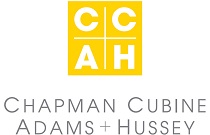
|
Why Your Nonprofit Should Integrate Digital Advertising in 2015
|
|
Posted by Matt Seney at Feb 11, 2015 12:02 AM CST
|
 Integrated marketing has been an industry buzz word for the last few years -- and by now, most organizations have at least begun to integrate email marketing with their traditional channels like direct mail and telemarketing. The next frontier, for a lot of nonprofits, is digital advertising: despite its advantages, digital advertising is not yet widely used among nonprofits for marketing and fundraising, for any number of reasons. But don’t let a lack of information, fear of costs, or channel confusion dissuade you -- now’s the time! This is the year to integrate digital advertising into your marketing and fundraising campaigns.
Integrated marketing has been an industry buzz word for the last few years -- and by now, most organizations have at least begun to integrate email marketing with their traditional channels like direct mail and telemarketing. The next frontier, for a lot of nonprofits, is digital advertising: despite its advantages, digital advertising is not yet widely used among nonprofits for marketing and fundraising, for any number of reasons. But don’t let a lack of information, fear of costs, or channel confusion dissuade you -- now’s the time! This is the year to integrate digital advertising into your marketing and fundraising campaigns.
Here are four tips for getting your organization into digital advertising as a part of your integrated campaign strategy:
1. Leverage Your Google Grant!
There is no more effective way to increase engagement than with a Google Grant. A Google Grant allows you access to up to $10,000 a month in free Google AdWords search advertising spend. And it’s FREE to qualifying nonprofit organizations!
There are a few limitations to the grant compared to regular paid advertising. First, you are limited to a max-bid cap of $2.00, so the grant won’t be optimal for more expensive keywords, particularly in expensive or top-tier markets. The other limitation is that your ads only show on Google.com and not the rest of Google’s search partner sites.
At The Lukens Company, we recommend using your Google Grant in conjunction with paid search advertising. Your grant is a great channel to test new keywords and ads, which you can then roll out to paid campaigns. In addition, you can use the grant to promote a wide variety of areas on you organization’s website -- areas that you might not promote otherwise. This helps drive traffic to your website, which grows your re-marketing audience. Many organizations find that a modest investment in digital advertising, used in conjunction with their Google Grant, has a great payoff in driving traffic, awareness, and support. All and all, the benefits of the grant outweigh the limitations.
2. Use New Ways to Target Your Advertising
Up until a few years ago, the trend in targeting was to buy “placements” on websites that your target audience was likely to visit. For example, if you wanted to reach men 18-35, you would buy advertising on espn.com. This presents two problems: 1) people outside of that target audience do visit espn.com and could been shown the ad, and 2) a site like espn.com knows they are a go-to site for a certain demographic and therefore they charge a premium.
“Audience” targeting is a trend that began a few years ago. This year, using audience targeting should be a tipping point for nonprofits. How it works is simple. You target a person rather than a website. With all the data available online, you build a profile of your target audience using demographic, interest, and behavioral data. Using the example above, if you wanted to reach men 18-35 you would select that profile and use cookies to target them across a variety of ad networks. The benefit is that your advertising is shown only to the right audience. Combining this with other targeting methods and brand protection, will ensure that your ads are shown on quality websites.
Audience targeting has also taken hold in social media. Last year, for example, Facebook partnered with Datalogix to provide Facebook advertisers access to third-party consumer data. Third-party data has been a staple of display and video targeting through demand-side platforms (platforms used to buy advertising) for some time. This year, more and more of The Lukens Company’s clients are using third-party consumer data and first-party data (data collected through an organization’s own web properties) as their key targeting tactics for digital advertising.
3. Take Advantage of a Cost-Effective Channel
More and more of your target audience -- potential donors and supporters of your cause -- are online, where there is more data available than ever before to help you market effectively to them. This year, we’ve seen many clients shift more resources into digital advertising because it is effective, affordable, and very measurable (ability to measure impressions, reach, engagement, conversions, etc.). While CPMs (cost-per-1,000 impressions) remain low as more digital inventory becomes available (e.g., people are consuming more and more video, so publishers are producing more videos).
4. Don’t Forget About Video
Digital advertising is growing as a whole, but online video, in particular, is seeing explosive growth. Everyone wants to push out new video content, creating a vicious cycle that plays right into our hands as marketers: People are consuming more video. Publishers then produce more video content. And people consume even more video. Video viewing creates usable data about the consumer based on the videos they watch. For nonprofits, this means data about potential donors and supporters, which when leveraged in targeting, can allow for further reach and stronger audience penetration.
The medium allows for very compelling creative, with strong potential to go viral and be reposted. This behavior broadens the reach of your content, which can lead to increased awareness and can support marketing and fundraising activities.
Let 2015 be the year when you add digital advertising to your integrated marketing mix!


















